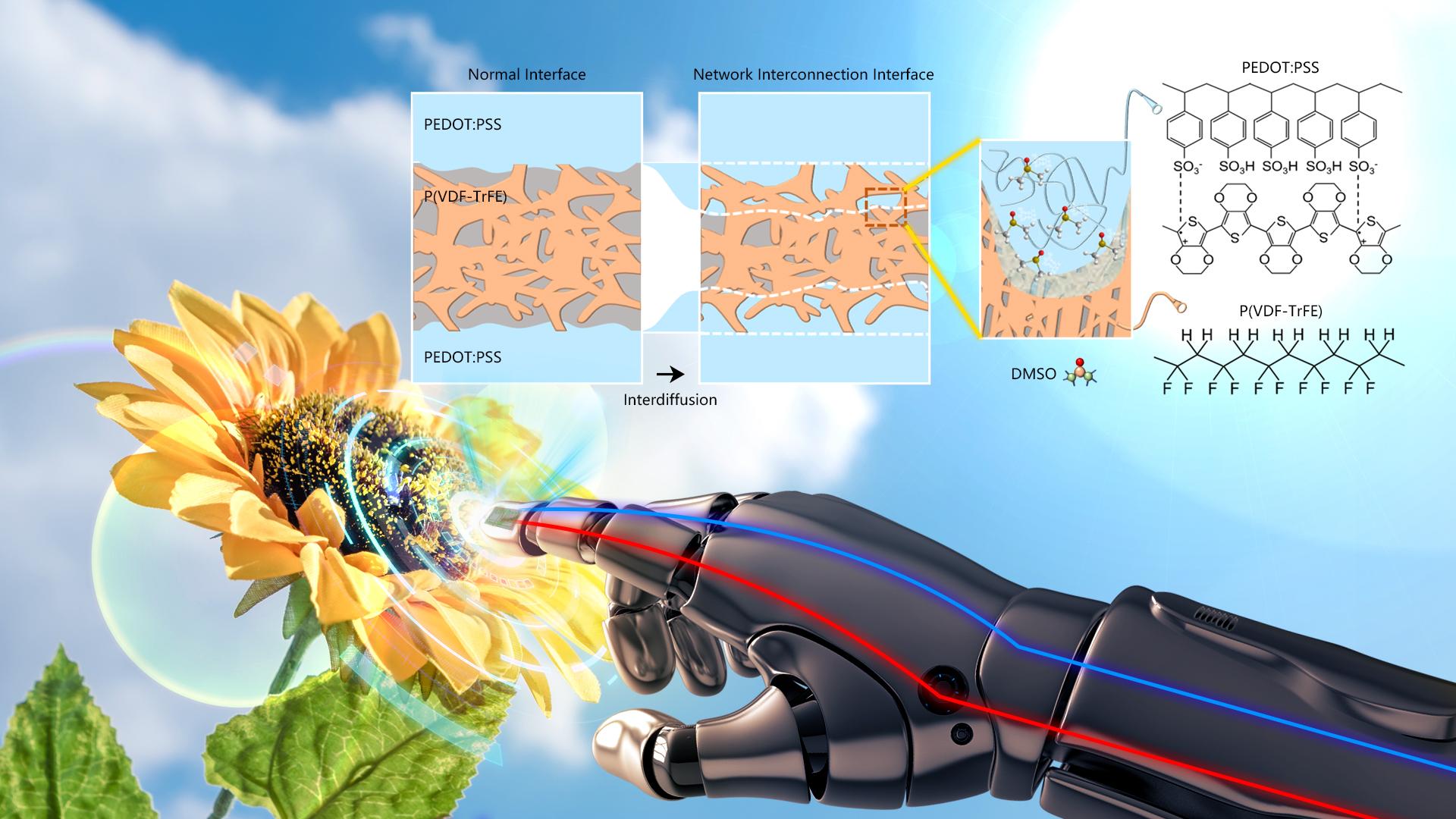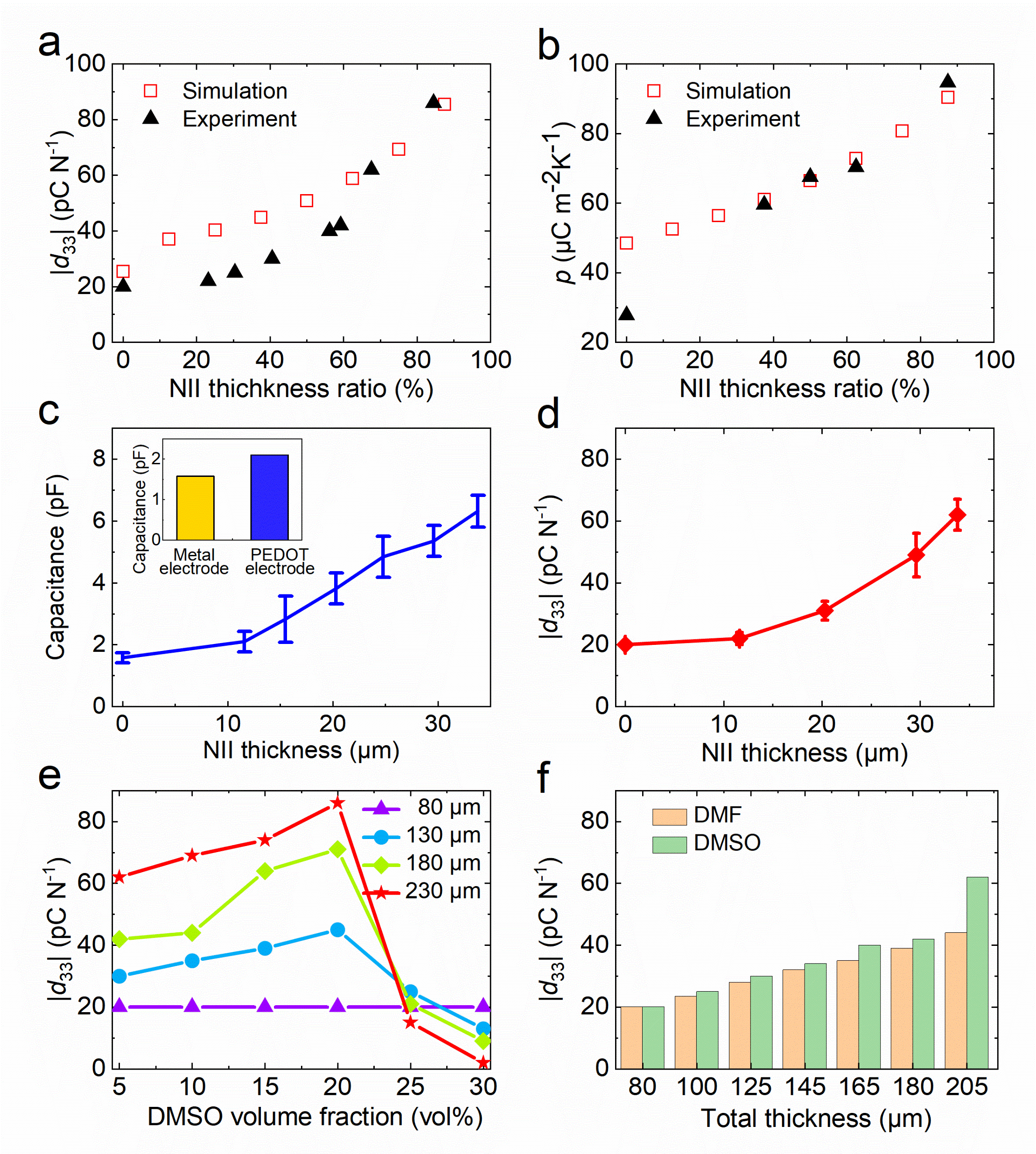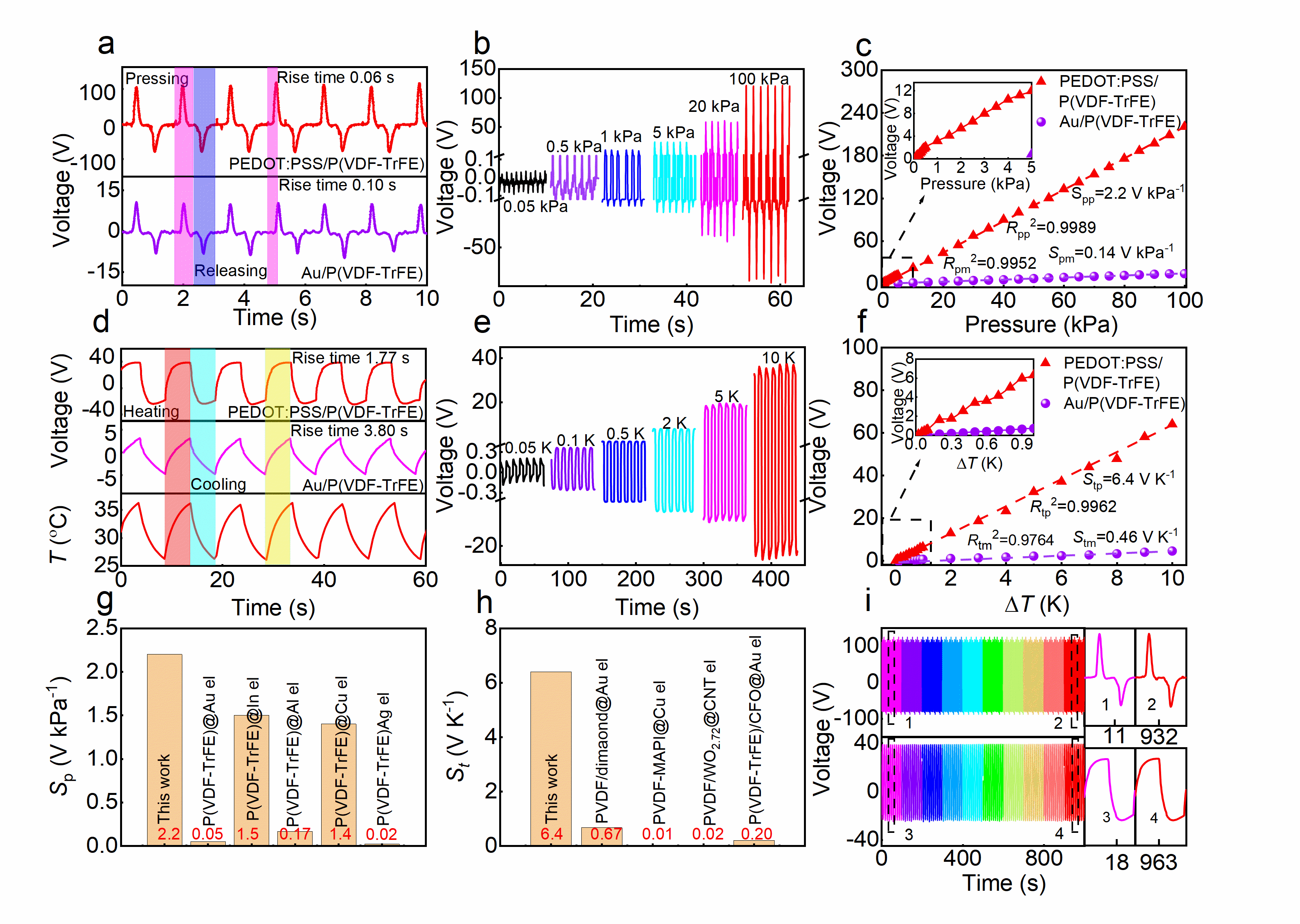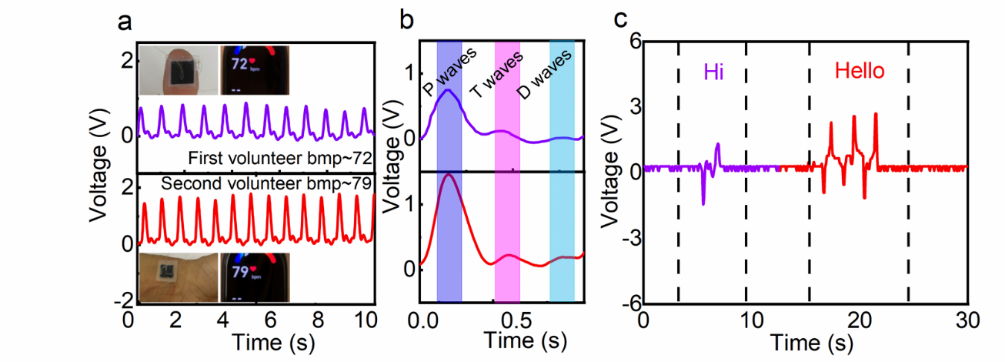Ferroelectric polymers have attracted enormous attention for their promising applications in electromechanical and electrothermal correction, such as in sensors, actuators, and energy harvesting, because of their chemical stability, flexibility, low-temperature processability, biocompatibility, etc.
The conventional poly(vinylidene fluoride-co-trifluoroethylene) copolymer (P(VDF-TrFE)) has a low sensor voltage output because of its relatively low piezoelectric and pyroelectric coefficients, resulting in the sensor not meeting the demand of a high voltage output for high sensitivity sensing. Therefore, the piezoelectric and pyroelectric coefficients of P(VDF-TrFE) are critical to improving the sensitivity and detection limit of P(VDF-TrFE)-based sensors.

Professor Weishu Liu’s research group from the Department of Materials Science and Engineering (MSE) at the Southern University of Science and Technology (SUSTech) has made new progress in the field of high-performance polymer sensors.
Their related results, entitled “Ultrasensitive Mechanical/Thermal Response of a P(VDF-TrFE) Sensor with a Tailored Network Interconnection Interface”, were published in Nature Communications. This work was also selected as a Highlight article by the editor.
The researchers reported an electrode interface engineering strategy to significantly increase the sensitivity of ferroelectric polymer P(VDF-TrFE)-based mechanical/thermal sensors by using the conductive polymer PEDOT:PSS (PEDOT, poly(3,4-ethylenedioxythiophene); PSS, polystyrene sulfonic acid) as the electrode. They claimed that the tailored three-dimensional electrode interface is characterized by a formed network interconnection interface (NII) structure, increasing the charge collection and improving the voltage response under mechanical/thermal stimulation.
Phase field simulation confirmed that the tailored NII structure increases the pyroelectric and piezoelectric coefficients. The as-fabricated P(VDF-TrFE)/PEDOT:PSS composite film exhibits an ultrasensitive and linear mechanical/thermal response, showing sensitivities of 2.2 V kPa-1 in the pressure range of 0.025-100 kPa and 6.4 V K-1 in the temperature change range of 0.05-10 K. The corresponding piezoelectric coefficient is -86 pC N-1, and the pyroelectric coefficient is 95 μC m-2 K-1, which are outstanding among the reported P(VDF-TrFE)-based mechanical/thermal sensors.
This work investigates the underlying mechanism of the penetrating electrode in ferroelectric copolymers and has shown that it is a promising candidate for applications in health monitoring and human-computer interaction.

Figure 1. Formation of the NII structure in a P(VDF-TrFE)/PEDOT:PSS composite film and its piezoelectric and pyroelectric properties

Figure 2. Mechanisms of the NII in performance improvement

Figure 3. Piezoelectric and pyroelectric voltage output of PEDOT:PSS/P(VDF-TrFE) with the NII

Figure 4. Application of the P(VDF-TrFE)/PEDOT:PSS composite film as an ultrasensitive sensor
Research Associate Professor Bo Li from the Department of MSE at SUSTech is the first author of this paper. Professor Weishu Liu is the corresponding author, and SUSTech is the first author of the paper. Other collaborators include Huazhong University of Science and Technology and Xiangtan University.
This work was supported by the Natural Science Foundation of Guangdong Province, National Natural Science Foundation of China (NSFC), Guangdong Provincial Key Laboratory Program, Shenzhen Natural Science Funds for Distinguished Young Scholars, and the Tencent Foundation through the Xplorer Prize.
Paper link: https://www.nature.com/articles/s41467-023-39476-4
To read all stories about SUSTech science, subscribe to the monthly SUSTech Newsletter.
Proofread ByAdrian Cremin, Yingying XIA
Photo By